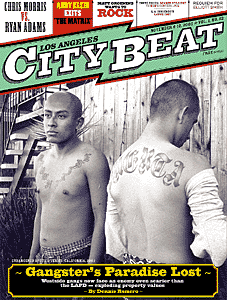Sample This!

LA CityBeat Oct. 14, 2004 By Dennis Romero It's a squealing guitar riff that's barely background noise in N.W.A.'s "100 Miles and Runnin'." Just a bit of acid ax buried under the rap. Nonetheless, this three-chord bit has helped make those who sample without permission - and permission means paying up - industry outlaws. Astonishingly for some, the practice of sampling has been pushed against the ropes by the U.S. 6th Circuit Court of Appeals in Cincinnati. A recent ruling by the court forces producers to get clearance for using even one-note snippets of others' performances. It has sent a chill through the hip-hop and dance music worlds. "In an instant," declared the anti-industry website downhillbattle.org, "this act made the majority of sample-based music illegal." More than any other instrument, the sampler symbolizes pop music's post-rock, postmodern era. Hip-hop, electronic dance music, boy bands, and teen pop sex symb...


